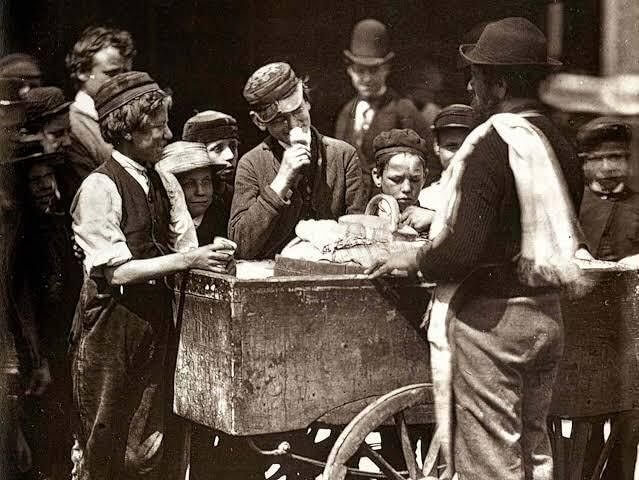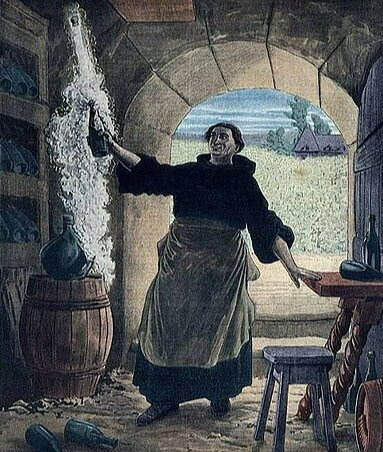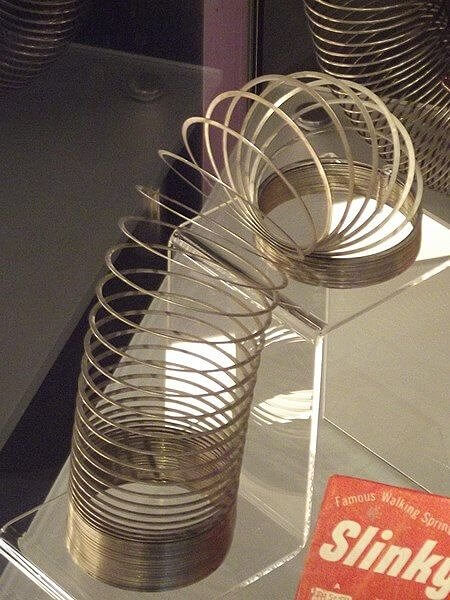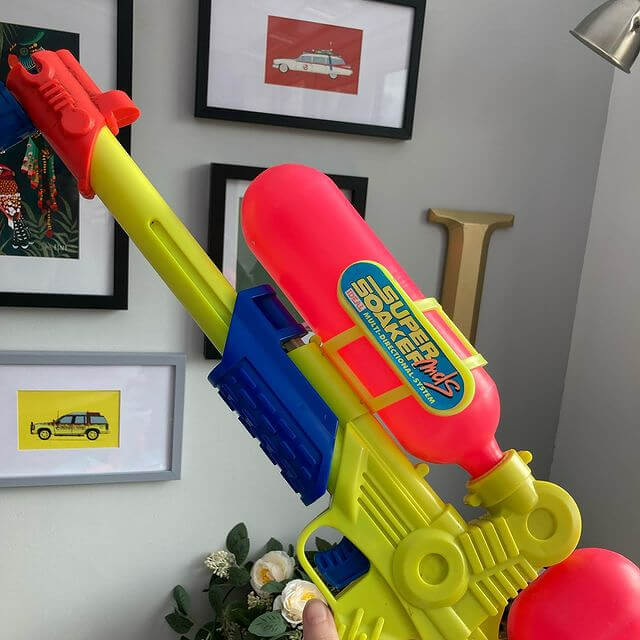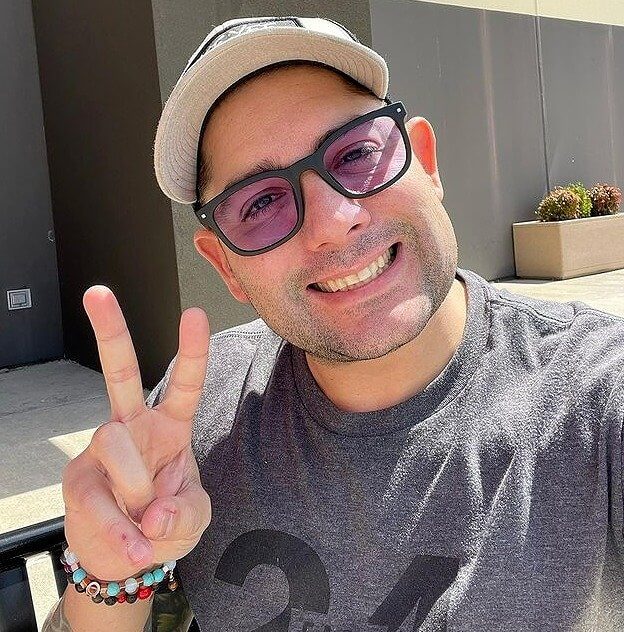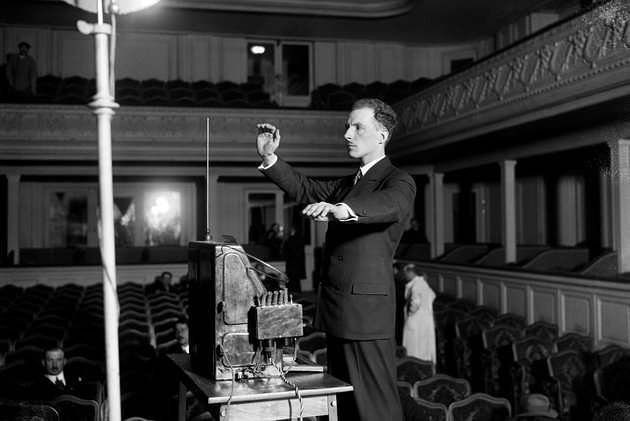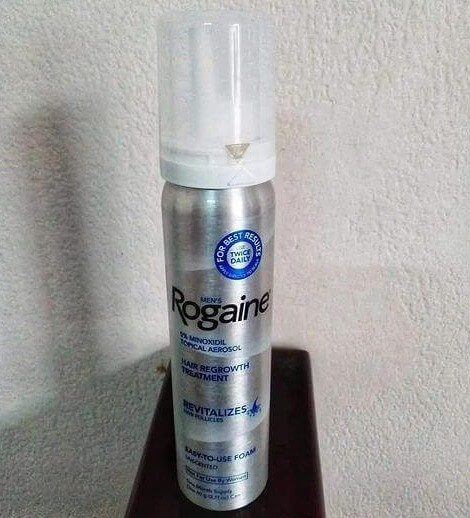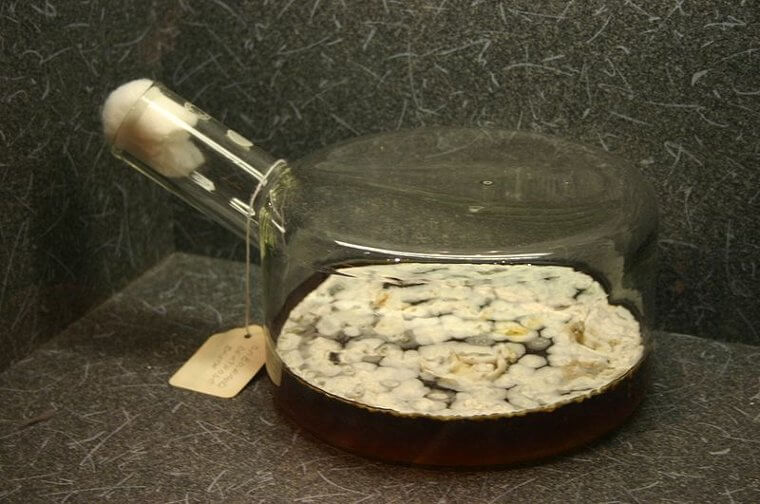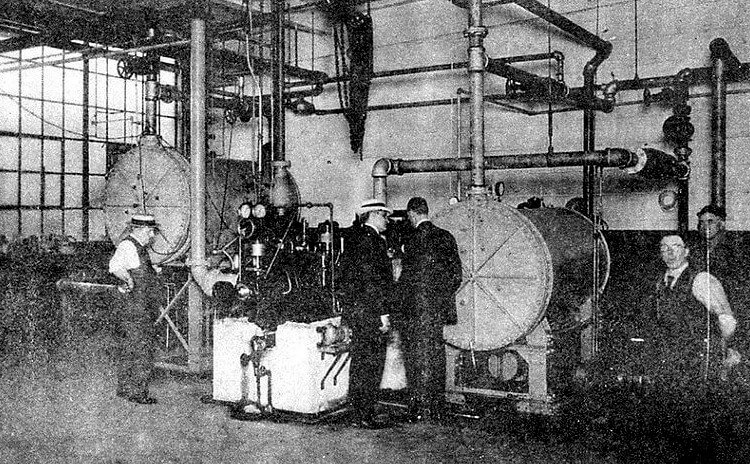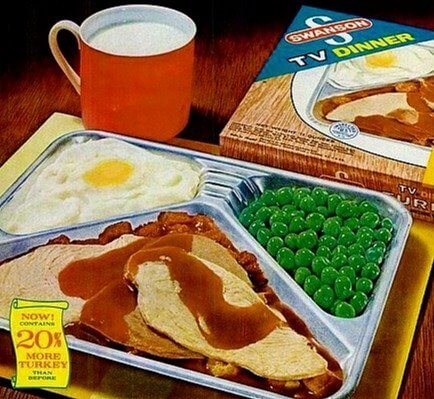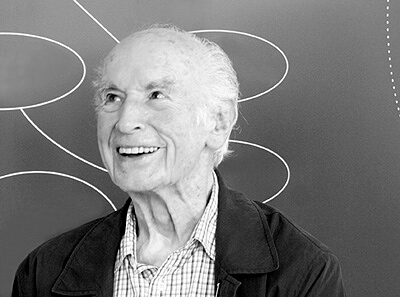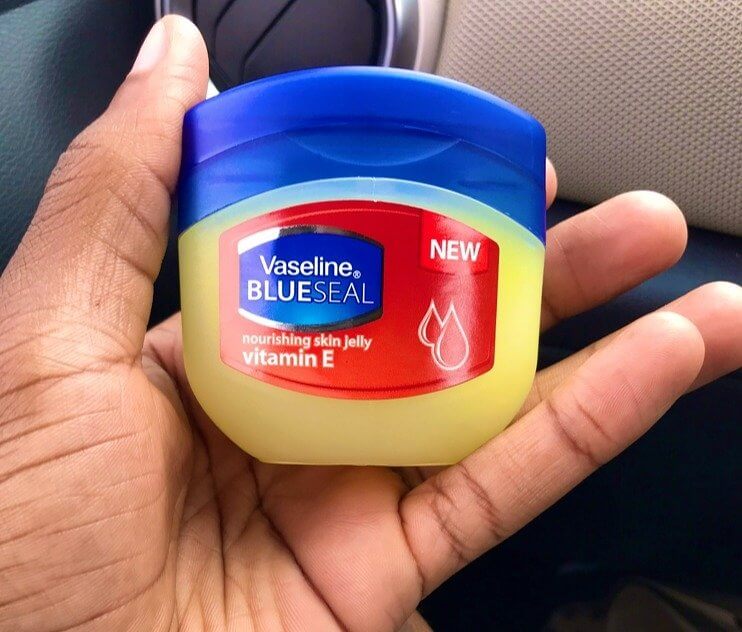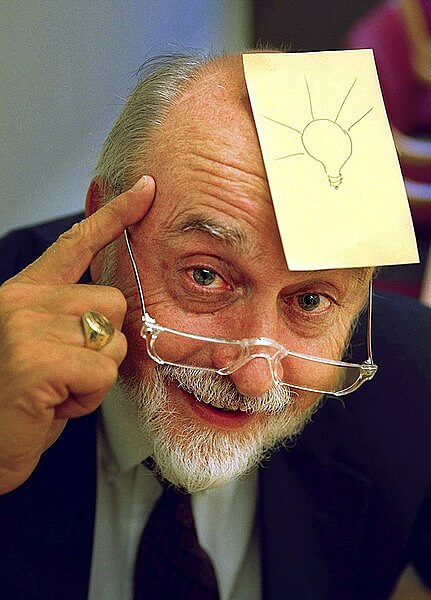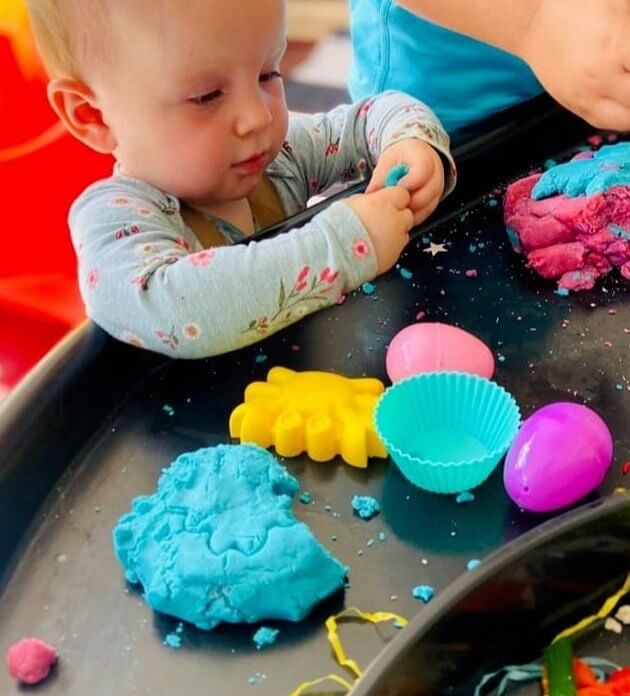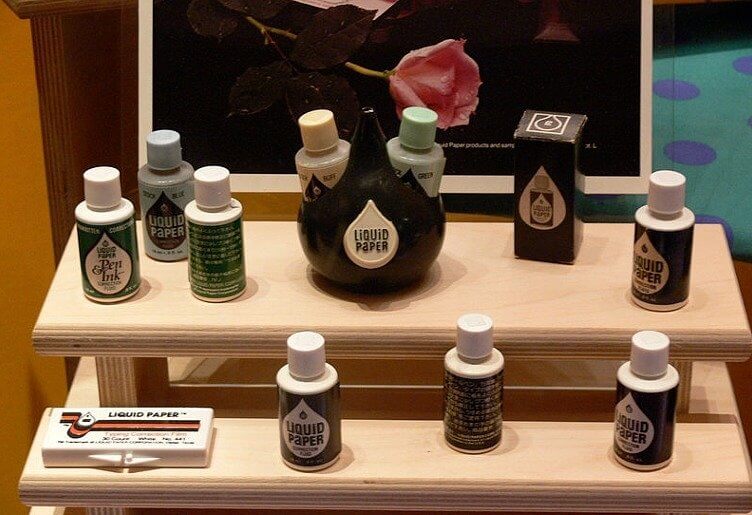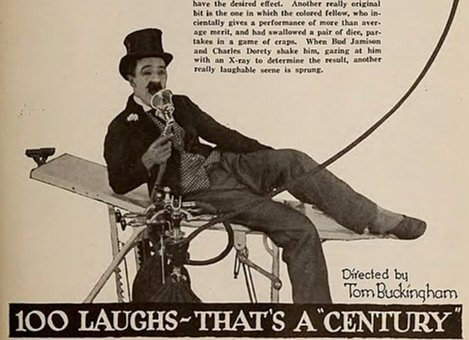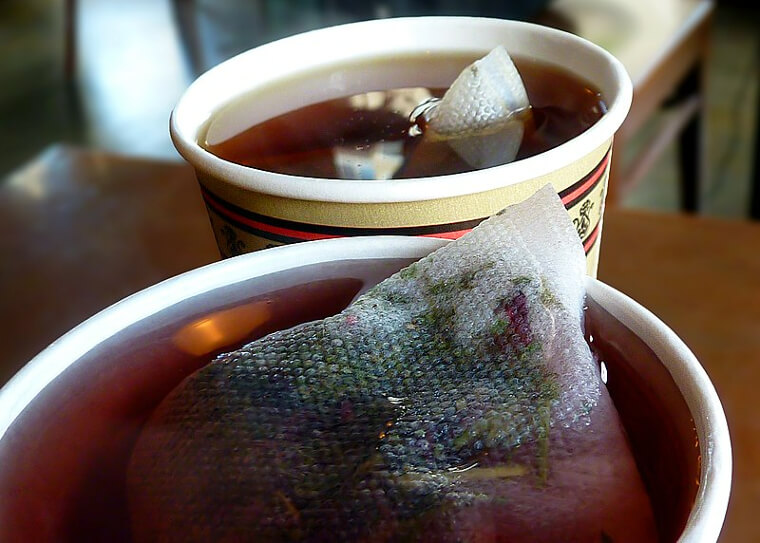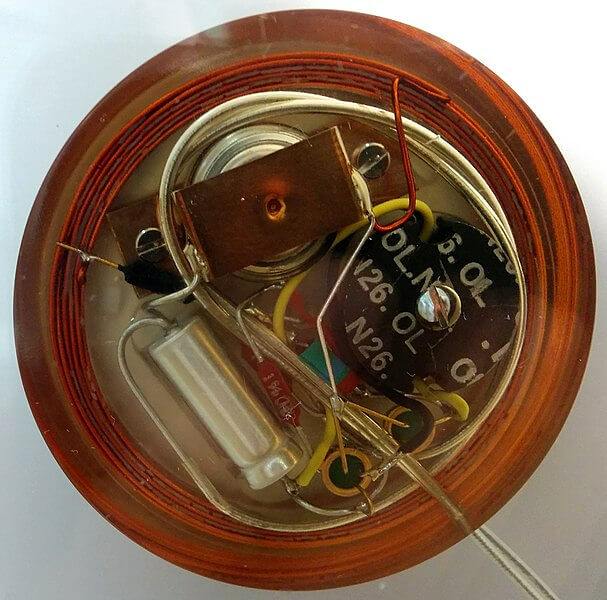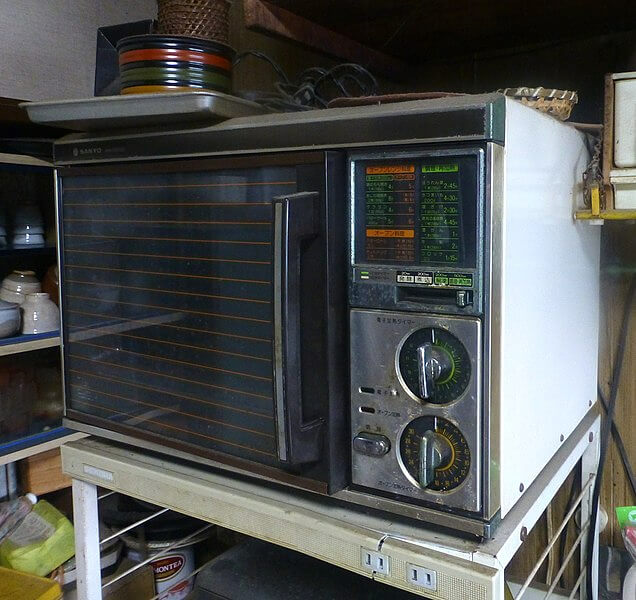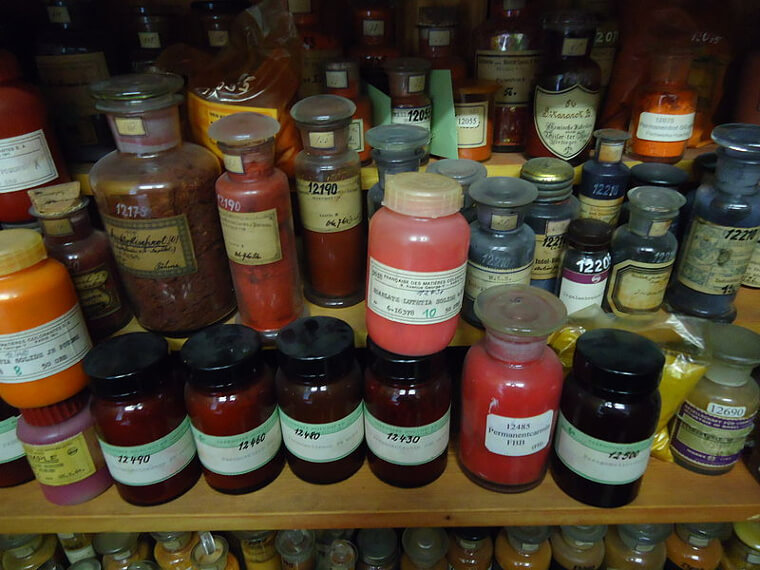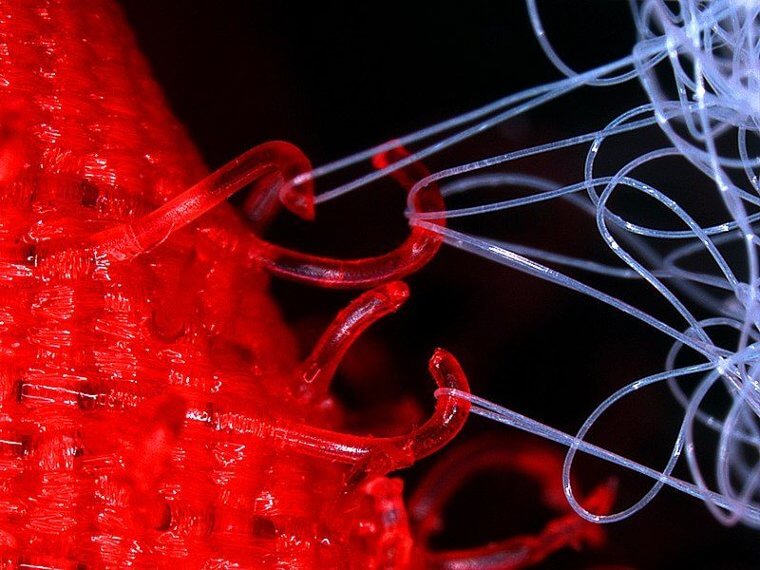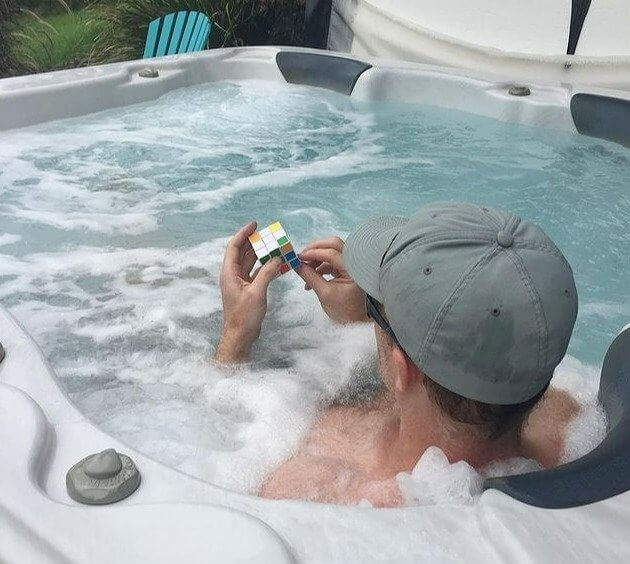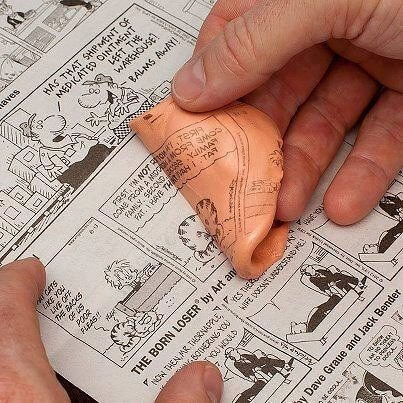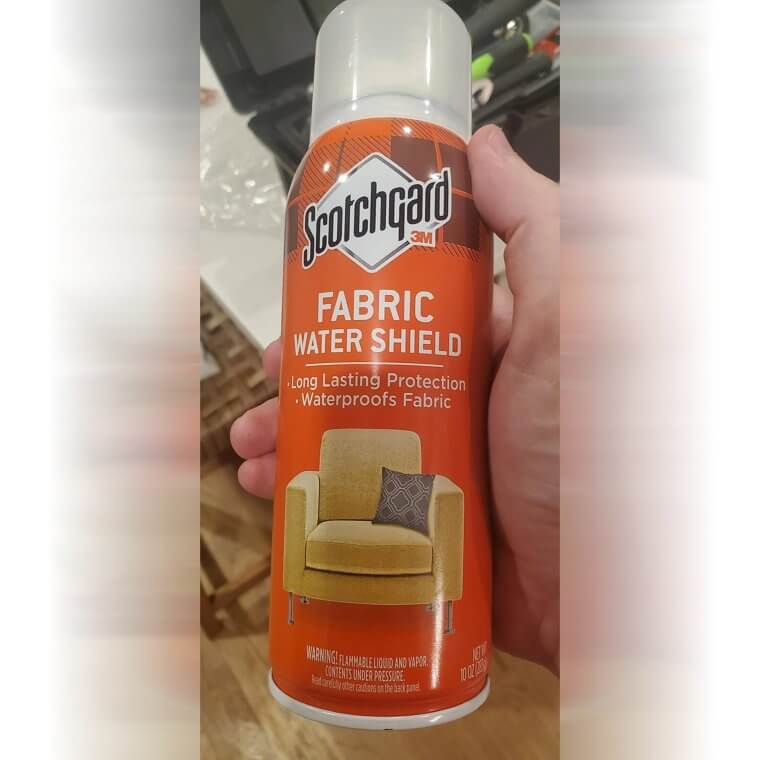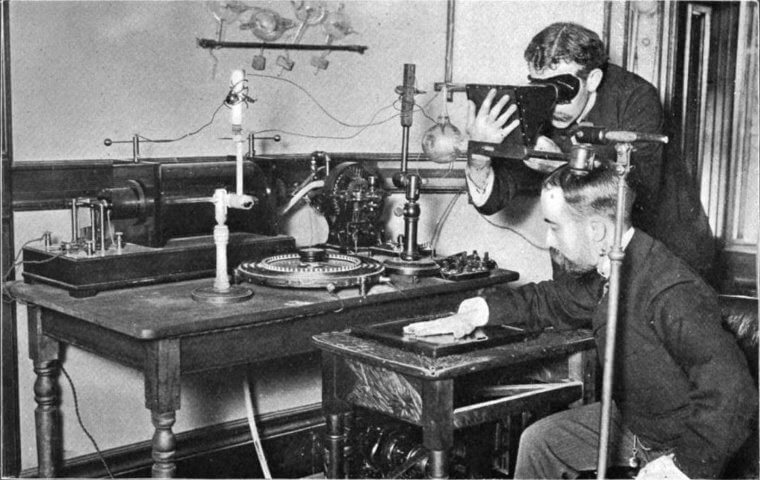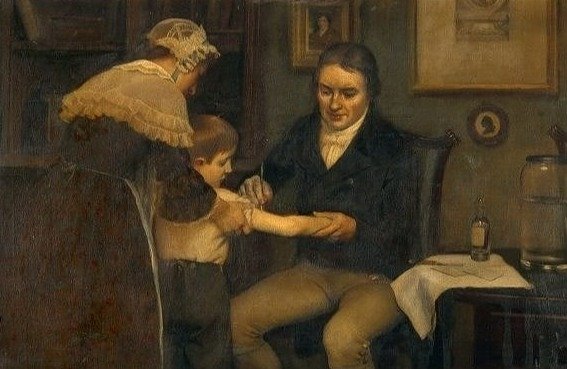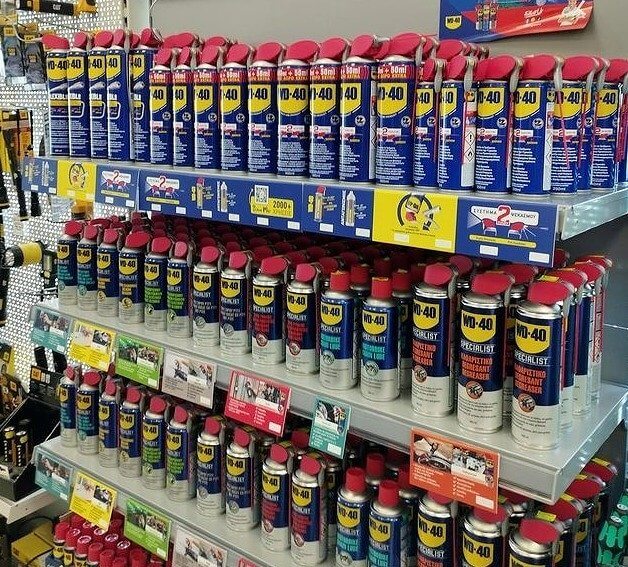The Ice Cream Cone Was Invented When an Ice Cream Vendor Ran Out of Cups
World Fair expos allow inventors from across the globe to showcase their designs on a worldwide stage. And during the 1904 World's Fair - AKA the Louisiana Purchase Exposition - an ice cream vendor was selling his ice creams to the hungry inventors around him. Although disaster struck when he realized that he had run out of cups, luck was on his side as Syrian immigrant Ernest Hamwi was making zalabia, a waffle wafer, next to him.
When Ernest realized that the ice cream cart was in trouble, he suggested that they use his waffles as a receptacle for the ice cream. At that moment, the ice cream cone was born.
A Textile Maker's Maid Knocked Over an Oil Lamp and Accidentally Invented Dry Cleaning
The name "dry cleaning" is a slight misnomer. Although dry-cleaned clothes aren't soaked with water in a laundry machine, they're not kept 100% dry either. Instead, the top layer of fabric is cleaned with chemical solvents using a tiny amount of water. But what you might not realize is that the art of dry cleaning was invented by complete accident. In fact, French dye-works operator Jean Baptiste Jolly has his maid's clumsy actions to thank for it.
After knocking a turpentine lamp over a dirty tablecloth, Jolly was amazed to see that the areas of the tablecloth that were spoiled by turpentine were cleaner than they had been before.
Bubble Wrap Was Originally Created to Be Used as 3D Wallpaper
Nowadays, bubble wrap is everywhere. It's used when people move houses and ship items in the mail and it's changed the way that many people store and protect their items. The idea for this product was originally developed by Alfred Fielding and Marc Chavannes in 1957, but it was never intended to be used this way. In fact, they originally trapped air bubbles within two shower curtains to be used as 3D wallpaper.
When their 3D wallpaper idea didn't take off, they decided to change course and market it as a way to insulate greenhouses instead. But then, they struck gold when IBM asked to use the product to ship their computers.
The Inventor of Dippin' Dots Was Actually Trying to Make Food Pellets for Cows
Although most humans think that Dippin' Dots are delicious in every way, it might surprise you to learn that they were never actually intended for humans. Instead, microbiologist Curt Jones was actually looking to devise a better and more efficient way to feed his cows. His idea was to freeze pellets of cow feed with liquid nitrogen - but first, he decided to try the process with ice cream as a trial.
When he realized that this process created delicious ice cream pellets, he decided to turn his idea into a business. He called his creation Dippin' Dots, and the rest is history.
Champagne Was Created by French Benedictine Monks Who Accidentally Ruined a Batch of Wine
When it comes to champagne, Dom Perignon is considered the best of the best. But what many people don't realize is that this product was created entirely by accident. In fact, it was created during the 17th century when French Benedictine monks were trying to focus on their wine production in the region of Champagne, France. But due to the cold temperatures and the high altitude, the wine did not ferment correctly.
The Catholic Church then sent monk Don Perignon to the monastery to take the excess carbon dioxide out of the wine, but instead, he decided to add more to make the fizzy drink we all know today.
The Slinky Was Originally Created to Stabilize the Equipment on Naval Ships
The Slinky's simple design can give anyone hours of fun, and it's considered to be one of the most popular toys of all time. But it wasn't originally designed to be a toy at all. Instead, mechanical engineer Richard James invented the Slinky by accident in 1943. He was working on a way to develop springs that would keep sensitive ship equipment stable during rough seas when he accidentally knocked one off the shelf above him.
As James watched the spring gracefully fall down to the floor, he realized that he had created something unusual. So, with a little development and work, he was able to bring the Slinky to life.
An 11-Year-Old Boy Created Popsicles When He Accidentally Left His Soda Outside Overnight
There's nothing quite like having a frozen popsicle on a hot summer's day. And while it would be easy to assume that these delicious treats were made on purpose, they were actually a complete accident. Not only that but they were accidentally invented by an 11-year-old! That young boy was Frank Epperson, who was enjoying a powdered soda mixture out on his front porch one day when he left it outside overnight.
Thanks to the cold outside temperature and the fact that the stirring stick was still in the packet, Frank woke up to a completely frozen lollipop. Upon tasting it, he knew he had something special.
A Rocket Scientist Invented the Super Soaker When One of His Pumps Sprung a Leak
Super Soakers have been fun for the whole family for decades, and their ability to shoot water at long range has helped many people win water fights. But originally, rocket scientist Lonnie Johnson hated this feature. To begin with, he was aiming to create a pump that would be able to move heat from one source to another. But when it sprung a leak and shot water at long range, he was infuriated.
He then realized that he had an opportunity on his hands and that his failed heat pump would make a fun and entertaining water gun. With a little extra work, he developed the Super Soaker.
An Animal Food Manufacturer Was Cleaning a Grinder When He Accidentally Invented Cheetos
Cheetos are one of the most popular snacks in America, and most people can't get enough of the cheesy goodness. And while these chips have been on our shelves since the late 1940s, they were accidentally invented much earlier. In fact, they were created in 1935 when an animal food manufacturer was cleaning a grinder using some moist corn. When corn puffs came out the other side, he had an idea.
He took the idea back to his home kitchen, where he cooked them from scratch and seasoned them with a blend of spices and herbs. The worker then took his product to Charles Elmer Doolin, the founder of Fritos.
When a Colorblind Man Borrowed Glasses Designed for Surgeons, He Realized That He Could See Color
While colorblindness isn't too much of a hindrance, many people who suffer from colorblindness appreciate the fact that these kinds of glasses exist. But we might not have ever realized this if it weren't for glass scientist Don McPherson and his colorblind friend. That's because McPherson originally designed these glasses for surgeons, to enable them to distinguish blood and tissue while they were in the operating theater. Then, he decided to lend them to his friend.
Although McPherson knew that his glasses worked as casual sunglasses for the everyday person to wear, he didn't realize that his glasses would allow his colorblind friend to see color for the first time.
A Protective Father Wanted to Help Out His Kids, and He Accidentally Invented the Slip 'N Slide
While many of the inventions on this list were accidentally invented by professionals in their field, the Slip 'N Slide was a little different. This popular activity was actually designed by Robert Carrier in 1960 after he noticed his 10-year-old son and his friends sliding down the concrete on his driveway. Although they had turned on the hose to take away the friction, Robert still thought it unsafe. So, he came up with a solution.
To make the game safer, Robert rolled out a vinyl-coated waterproof fabric on the concrete driveway. A little while later, he decided to patent the invention and create the very first Slip 'N Slide.
The Slushy Was Accidentally Invented When a Soda Fountain Broke Down and Stopped Working
There's nothing quite like drinking a slushy on a hot summer's day. This drink is delicious, hydrating, and cooling - and it's become one of the most popular drinks around. But the slushy wasn't created on purpose. In fact, it was accidentally invented when the soda fountain in a Dairy Queen in Kansas stopped working. When this happened, the shop's owner had to come up with a creative solution to save his inventory.
Instead of throwing away the soda, he decided to store it in the freezer. When his customers raved about the partially frozen slushy drink, he knew that he had stumbled across the next best thing.
A Soviet Spy Accidentally Invented Electronic Music While He Was Experimenting With Electromagnetism
Soviet radio engineer Leon Theremin is infamous for his inventions. Not only was he the inventor of a device that allowed Soviet agents to spy on secret conversations, but he is also credited for accidentally inventing electronic music. He did this during his experiments with electromagnetism when he realized that he could use his fingers to manipulate sound waves between two antennas. In doing so, he created new music nobody had ever heard before.
Vladimir Lenin, the head of the government at the time, was blown away by Leon's invention that he sent the inventor on a tour around Europe and the United States to showcase his work.
This Hair Loss Treatment Was Originally Used to Treat Mouth Ulcers and High Blood Pressure
Rogaine is one of the world's most popular brands of hair loss treatment, but this product wasn't invented for the purpose it's known for today. Chemists developed Minoxidil during the 1950s with the intention of treating mouth ulcers. Although it was not successful in doing so, pharmaceutical companies didn't want to give up on it - and they eventually realized that it also helped to combat high blood pressure. That wasn't all, though.
During the human trials of Minoxidil, researchers discovered that some of the men in the study were experiencing a strange side effect. As they discovered that the treatment could also stimulate hair growth, they changed tact.
Pink Lemonade Was Invented When a Circus Vendor Accidentally Dropped Candy Into Their Lemonade
Today, pink lemonade is just as popular as regular lemonade - but this addition to the drinks game wasn't created on purpose. Instead, pink lemonade first made its appearance when circus vendor Henry E. Allot accidentally dropped his red cinnamon candies into the batch of lemonade he was trying to sell. Although the candy turned the drink pink, he knew that he couldn't throw the whole batch away. So, he decided to roll with it.
Amazingly, his customers all seemed to enjoy the new and exciting drink. People traveled from far and wide to try his famous pink drink, and he eventually turned it into a more profitable business.
Alexander Fleming Accidentally Discovered the First Antibiotic in a Moldy Petri Dish
Scottish bacteriologist Alexander Fleming is known for discovering the world's very first antibiotic, penicillin. He was subsequently awarded the 1945 Nobel Prize for Physiology or Medicine as a result, but what many people don't realize is that this discovery was made after a vacation went wrong. Yes, upon entering his lab after his vacation, he found that one of his Petri dishes was covered in mold. At first, he was going to throw it out.
However, he decided to keep the moldy petri dish when he realized that the mold seemed to repel the bacteria he was trying to cultivate. With a little extra research, he uncovered the benefits of penicillin.
Air Conditioning Was Originally Invented to Keep the Air Dry Around a Printing Press
In the summer of 1902, the Sackett-Wilhems Lithographic and Publishing Company in Brooklyn was having some problems. The humid temperatures were affecting their printing presses, resulting in shrunken paper and poor-quality images. Because of this, they enlisted the help of engineer Willis Carrier, who was tasked with inventing a solution that would pull the humidity from the air and keep the area dry. So, that's exactly what he managed to do.
However, the fans and coils he created cooled down the whole room, rather than just the area around the printing press. Because of this, he's credited for inventing the modern air conditioning unit.
The Swanson Company Over-Ordered Turkeys for Thanksgiving, So They Invented the TV Dinner
In 1953, the Swanson company knew that they would need to order a lot of turkey in preparation for Thanksgiving. However, an order mix-up left them with over 260 tons of extra frozen turkey to deal with - and they didn't know what to do. As the whole team put their heads together to think of an idea, it was salesman Gerry Thomas who ultimately came up with the winning invention.
Gerry was inspired by in-flight meals on airlines when he came up with the idea of creating a TV dinner, and the whole team eventually created 5,000 turkey TV dinners as a result.
Coca-Cola Was Originally Invented to Help Addicts Come Down off Morphine
Today, Coca-Cola is one of the most popular drinks in the world. But the ingredients of this drink were once very different - and it was used for a very different purpose. The idea was created by Civil War veteran John Pemberton, who became addicted to morphine after a war injury left him in immense pain. With his medical degree in tow, he decided to create a "tonic" that would help him fight his addiction.
This tonic was made from the African kola nut and coca leaf wine, meaning that it was full of caffeine and cocaine. He then sold the recipe to pharmacists, who used it as medicine for addicts.
Albert Hofmann Accidentally Ingested His Experiment and Had the World's First LSD Trip
Before 1929, Albert Hofmann was just like any other chemist. He worked on his experiments and he focused his attention on the chemistry of plants and animals. On one particular day, Hofmann was studying the chemical fungus found on grains when he accidentally swallowed part of his research. What he didn't realize at the time was that this compound had psychedelic properties and that he'd accidentally had the world's first LSD trip.
While experiencing the effects of the lysergic acid diethylamide, Albert knew that he had stumbled upon something extraordinary. So, he and his team worked together to isolate, name, and synthesize the drug known as LSD today.
A Chemist Accidentally Discovered That Petroleum Jelly Could Heal His Cuts and Burns
From an early age, Robert Chesebrough knew that he wanted to be a chemist. As the years went by he found himself drawn to new fuels, and when he learned of the discovery of petroleum in Titusville, Pennsylvania in the 1950s, he decided to give the place a visit. It was here that he spotted a strange phenomenon; many of the oil drills were breaking down due to "rod wax" - something they called petroleum jelly.
At first, Robert didn't know what to make of the petroleum jelly. But when he accidentally covered his cuts and burns in the jelly, he turned the by-product into the Vaseline we know today.
Arthur Fry Invented the Sticky Note to More Easily Mark His Church Choir Book
During the 1960s, American chemist Spencer Silver was working at 3M, and it was his job to formulate and devise an adhesive product that would have industrial strength. Despite his hard work, he struggled to invent a product that would have the desired effect. In fact, he soon realized that his experimental composition would barely keep two pieces of paper stuck together. But it was this feature that gave his co-worker an idea.
At the time, his colleague Art Fry was looking to attach a bookmark to his book without ripping or damaging the pages, and Spencer's adhesive intrigued him. Together, they created the Post-It note.
Play-Doh Was Originally Created as a Cleaning Putty to Clean Dirty Wallpaper
Although Play-Doh is still hugely popular today, it was actually invented back in the early 1930s by an inventor called Noah McVicker. He was asked by the Kroger Grocery company to create a cleaning putty that would clean dirty wallpaper that was coated in coal residue. His product served its purpose until vinyl wallpaper rendered it useless, and Noah assumed it had run its course. But then a nursery school teacher noticed something very interesting.
The nursery teacher discovered that the children in her class loved to steal her cleaning putty and mold it into fun and colorful shapes. When he heard this, Noah decided to rebrand and market his product as Play-Doh.
Viagra Was Originally Created to Treat People With Heart Conditions
The "little blue pill" is one of the most infamous creations within the pharmaceutical world, and it's known today for helping men who have certain intimate problems. Known officially as Sildenafil, this medication was launched back in 1989 when Pfizer developed the medication to serve as a treatment for chest pain and heart problems. During the clinical trials, Sildenafil successfully treated pulmonary arterial hypertension - but it also did something else.
During the trials, male test subjects began to report strange side effects of the medication. While it was clear that the side effect was dilating the blood vessels, it was also happening elsewhere!
Secretary Bette Smith Accidentally Invented Wite-Out to Avoid a Grilling From Her Boss
Unlike computers, phones, and tablets, it's not as easy to fix your typos when you're writing on pen and paper. This was even more of an issue during the early 1900s when secretaries had to use typewriters. But instead of letting her boss see her mistakes, secretary Bette Smith decided to create something that would help her out. She mixed paint to match the color of her ink and brushed over her typos with a watercolor brush.
When her colleagues noticed her invention, they all asked for bottles themselves. Before too long, she started to market her product as "Mistake Out" which was later changed to Wite-Out.
George Crum Created Potato Chips to Fight Back Against a Complaining Customer
Potato chips are everywhere. Packets of the things line the shelves of grocery stores and they can be found in vending machines across the globe. And while it would be easy to assume that they were created for a reason, they were actually created by George Crum in response to a customer who sent back his plate of fries twice. In the customer's eyes, the fries were too thick and way too undercooked.
In response, George passive-aggressively sliced and fried his potatoes so that they became thin and crunchy. He was expecting the customer to complain once again, but they actually thought they were delicious!
A Traveling Showman's Dangerous "Laughing Gas" Stunt Led to Its Use as an Anaesthetic
During the 1800s, nitrous oxide - AKA "laughing gas" was a common addition to traveling shows and circuses. And in 1844, Dr. Horace Wells attended one of these shows, where he watched a traveling showman administer laughing gas to a participant while attempting a dangerous stunt. It was during this stunt that the showman accidentally cut the leg of the participant. However, the participant hadn't felt a thing throughout the whole ordeal.
At the time, the dentist had been researching new forms of anesthetic. And when he realized that the laughing gas could take away the pain of the participant, he knew that he had to use it in his practice.
Tea Bags Were Originally Meant for Packaging Purposes, Not for Brewing Purposes
Although loose-leaf tea is becoming more and more popular, tea bags are still most people's go-to when it comes to brewing their hot drinks. These bags allow you to have a leafless cup of tea, and they allow you to dunk the bags to suit your preference in terms of strength. However, tea bags were never meant for brewing purposes. Thomas Sullivan originally used these bags - which were silk pouches - to package his imported tea in the early 1900s.
When his customers realized that they could simply dunk the whole pouch of tea in water and still maintain the desired taste, Sullivan was asked to continue this packaging process.
The Pacemaker Was Accidentally Invented by John Hopps While Treating Hypothermia Patients
During the early 1940s, John Hopps was working as a medical researcher in Canada. He spent much of his day researching how radio frequencies could treat patients suffering from hypothermia, and he was committed to helping raise the heartbeat of those whose body temperatures were way too low. And it was during this important research that he accidentally stumbled upon the idea of mechanical and electrical stimulation of the heart.
In fact, Hopps discovered that this stimulation could actually restart a heart. He used this notion to invent the very first pacemaker, and later he also invented the first combined pacemaker-defibrillator.
Percy Spencer Realized He'd Invented the Microwave Oven When a Candy Bar Melted in His Pocket
By the time the late 1930s came along, Percy Spencer was considered to be one of the world's leading experts in radar tube design. He specialized in the manufacturing of magnetrons, with the intention of devising new technology for defense intelligence. But as he was testing one of his machines one day, he noticed that the candy bar in his pocket had melted. He wasn't the first to notice such a phenomenon, but he decided to investigate it further.
In doing so, Percy put other food items into the machine, including popcorn kernels. When he realized that his machine was heating the food inside, he came up with the idea of the microwave oven.
The World's First Artificial Dye Was the Result of a Malaria Mix-Up
In 1856, British teenager William Perkins was a chemistry student, trying to make his way at the Royal College of Chemistry. Although he was just 18 years old, he made it his mission to synthesize quinine for the treatment of malaria. However, a mix-up meant that he was unsuccessful - and he was left looking at a tube of bright, vivid purple liquid. On closer inspection, though, he made a discovery.
As he looked at the bright color in front of him, he realized that it was much more vivid than the other natural dyes on the market at the time. So, he used this mix-up to create the world's very first synthetic dye.
The Inventor of Velcro Came up With the Idea While He Was Pulling Burrs From His Dog's Fur
Anyone who has a dog will know that burr seeds can be a nuisance. During the 1940s, Swiss engineer George de Mestral had the same issue - especially after hiking trips with his dogs. Curious about the strength of these burrs, he decided to take a closer look at them under the microscope. This is when he noticed the interesting hooks and loops that made up the seeds, and it gave him an idea.
Using the same hook and loop design, George came up with the idea of a self-bonding fabric made from nylon. He spent 10 years making his design perfect, and he eventually created Velcro.
An Architecture Professor Originally Invented the Rubik's Cube to Showcase Three Dimensional Movement
Puzzle toys are extremely popular, but none will ever come close to the Rubik's Cube. This puzzle has dominated toy shelves for decades, with kids and adults alike spending hours solving it. But what you might not realize is that this cube was never intended to be a cube. Instead, it was invented by Ernő Rubik, a Hungarian professor of architecture. And he originally designed the product to teach his students about three-dimensional movement.
Rubik's original “Bűvös kocka" prototype was made using wood, rubber bands, paper clips, and paper, but it was later developed into the modern cube we all know and love today.
Silly Putty Was Invented by an Engineer Working for the Army During World War II
World War II had a major impact on countless industries across the globe, and even the United States army found themselves running low on materials - especially natural rubber. This meant that their reserves of tires for military vehicles and combat boots started to dwindle. Because of this, they enlisted the help of the General Electric Company to develop a synthetic rubber alternative, and engineer James Wright was tasked with creating this new material.
During his experiments, James created a new material that could bounce on the floor and be molded into different shapes. At the time, Silly Putty had no use in the military, but now it's a household name.
A Chemist Was Working on Highly Durable Rubber When She Accidentally Invented Scotchguard
During the 1950s, talented chemist Patsy Sherman managed to bag herself a job at the multinational conglomerate, 3M. She was tasked with developing strong and durable rubber compounds to be used on jet planes, but today she's remembered for something totally different. While experimenting with her compounds, she accidentally dropped some onto her shoe. At the time, she didn't think much of it and simply continued on with her day.
As time wore on, Patsy realized that the spot where she dropped the blend on her shoe was still clean, while the rest of her shoe was getting increasingly dirty. With a little extra work, Patsy brought Scotchguard into our lives.
Wilhelm Roentgen Was Experimenting With Radiation When He Accidentally Discovered the Power of X-Rays
X-rays have changed the course of medicine. It's now easier than ever to find broken or fractured bones, and they're used on a daily basis in hospitals across the globe. And we have Wilhelm Roentgen to thank for that. However, he never intended to create waves in the medical field. Instead, he was simply playing around with radiation when he discovered a green light could pass through human tissue while leaving shadows of a person's bones.
Throughout his research, Wilhelm covered his Crookes tubes with everything from wood to carbon paper, but the x-rays still continued to pass through human tissue. So, he knew he'd stumbled upon something remarkable.
Golfers Used Perfectly Round Balls Until They Realized That Dented Balls Were More Efficient
Back in the day, golf balls looked a little different from how they look today. They were perfectly round and spherical, without any indentations on them at all. And while this worked for a while, golfers eventually realized that the balls in their bags that were dented or scuffed could be hit much further than those that were perfectly round. So, they decided to change the shape to work in their favor.
Eventually, the design of golf balls was changed to include the dimples we see today. In fact, the average golf ball has around 336 dimples, and they all need to be perfectly symmetrical.
Edward Jenner Created the First Vaccine From the Pus of a Woman's Blister
It's easy to assume that medical advancements have happened largely in the 20th and 21st centuries. But that's not the case. The very first vaccine was accidentally discovered in the 18th century when physician Edward Jenner was working with a smallpox patient. While attending to his patient, he realized that she only had mild symptoms compared to others he had seen. This allowed him to come up with an idea.
In a move that left many stumped, Jenner decided to inject the pus from a blister of the smallpox patient into the arm of a fully healthy young boy. By doing this, the young boy developed immunity.
German Telecommunications Engineers Developed SMS Texting for Their Small Team
It's hard to imagine a world today without SMS texting. Countless text messages are sent around the world every single day, which is why it's difficult to understand that this invention was only developed for a small number of people in 1984. That's because German telecommunications engineers only wanted to be able to talk to each other for the sake of testing their service, and didn't imagine it going global.
When the genius nature of their invention caught on, they quickly realized that their development could change the course of communication forever. And now we know that's exactly what it did.
WD-40 Was Originally Invented to Be Used as a Missile Degreaser
Many people around the world have a can of WD-40 in their garage. This product has a ton of different uses around the home, but it wasn't originally designed to be such a well-rounded invention. It was actually created by Norman Larsen to be used as a degreaser on missiles, and it took him 40 attempts to get the concoction just right. Eventually, it was used to protect the Atlas Missile from corrosion.
However, Norman soon realized that his product constantly go missing around the workshop. As fellow employees realized that it could be used as a degreaser around the home, he knew he had to make it more readily available.

